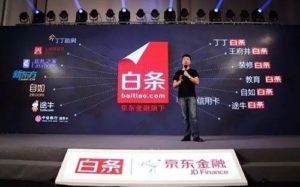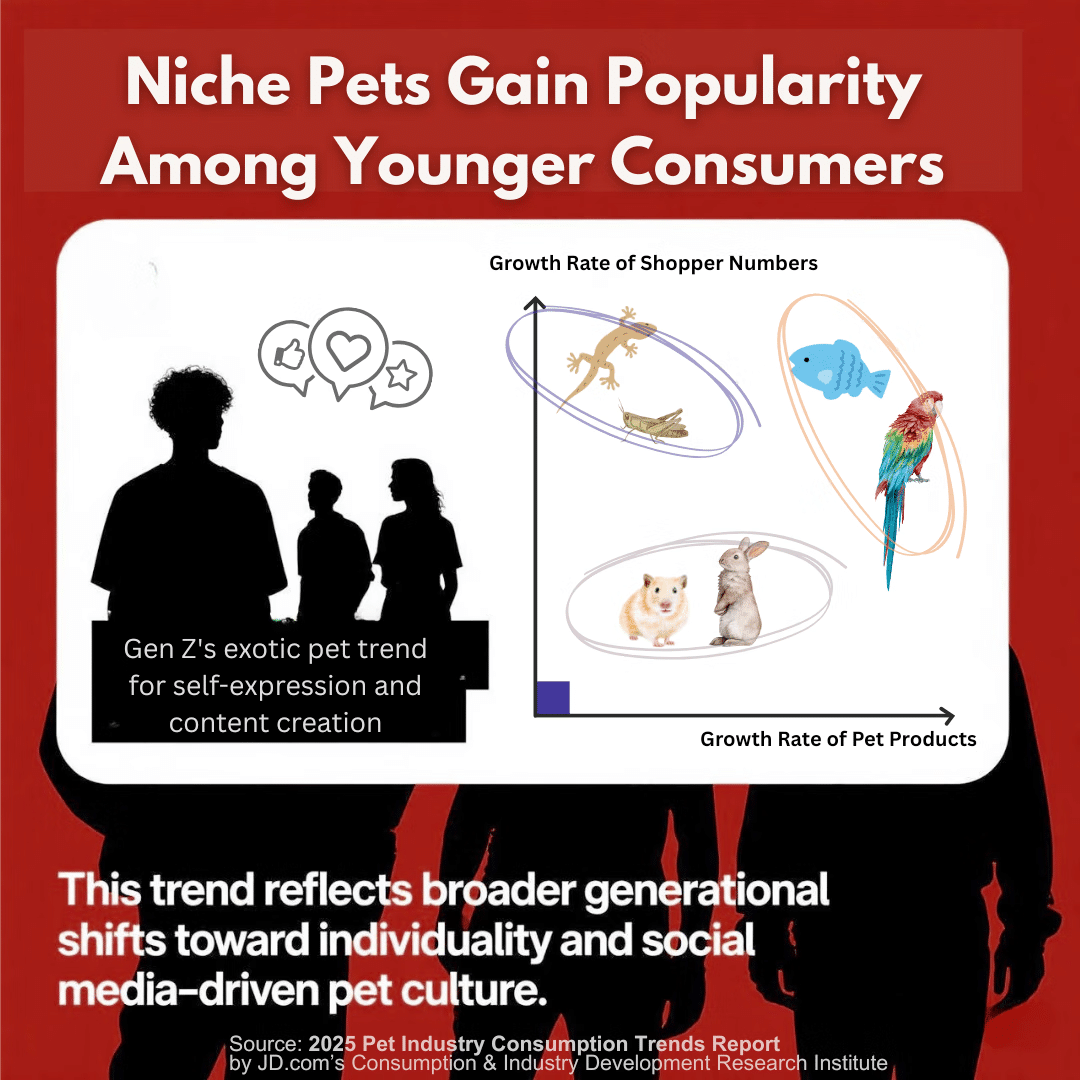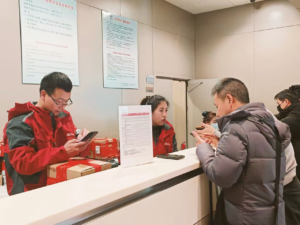Aug 21, 2020|
JDD Leaders Series: Ling Xu: Hop, Skip and Jump of JDD
by Ling Cao
“If you want to succeed in retail finance, you have to apply big data to real-life scenarios.”
When Ling Xu, president of fintech at JD Digits (JDD), was asked why he joined the company in 2013, which was when internet finance took off, the young vice president at JD Digits said with confidence and a smile on his face, “I had been thinking of joining a non-banking institution since 2012 because I wanted to bring innovation to the consumer finance industry.”
JDD’s Three Development Phases
Phase 1: Becoming an innovative Competitor in the Financial Industry
In his office on the 16th floor at JD’s headquarters, Xu shared the three development phases for JDD. In Phase 1, which was from 2013 to 2015, JDD established itself as an innovative competitor in the financial industry. JDD sought to leverage big data when entering the market in order to solve challenges that traditional banks face, such as low efficiency when dealing with payment and credit service for merchants. During this period, JDD launched a series of consumer finance products, such as JD Wallet and JD IOU(京东白条).
In February 2014, Xu and his team launched China’s first internet consumer finance product: JD IOU, similar to a credit card but in virtual form. JD IOU has played an important role in customer growth, especially enhancing young customers’ purchasing power on JD. Data shows that customers’ purchasing power has increased 50%-60% after using JD IOU, which aims to solve the pain points that come from traditional banking, including tedious application processes and lack of credit access, particularly for young people with limited or no credit history.
Xu wondered if consumer finance services could be offered entirely online. After all, the business model would be similar to buying or selling a cell phone. Before, people would shop for cell phones at an offline store. But the rent and inventory costs made this model less cost-effective for the business compared to an online shopping experience. JD IOU’s model follows this principle. At the click of a button, users can apply for an IOU credit line in just one minute.
The logic behind JD’s criteria is sensible and straightforward. Using JD’s retail business data and obtaining a user’s consent, JD can analyze a user’s profile to judge two key factors: whether the person has a willingness of repaying and whether the person has the ability to repay. These criteria are especially beneficial for younger consumers who earn less but have a stronger demand for financial credit.
JD IOU model is sometimes compared to a model used by Grameen Bank in Bangladesh established by Muhammad Yunus(1940-) who won Nobel Peace Prize in 2006 by introducing small amount of loans to the poor, in which loan borrowers need to form a small group to monitor each other’s payment behavior. However, Xu says this may not be a good way to determine an individual’s credit limit. IOU model leverages technological innovation to bring benefits to individuals, and by utilizing big data insights, the model can determine an individual’s ability to repay.
JD Digits has built an application system that is convenient for users and leverages JDD’s innovative technology and complex work on the back end. For example, by analyzing an address, the system may identify whether the person is employed, owns a home, or has additional family members.
“JD IOU is a successful product in its first phase regarding innovation. The next step involves finding ways to utilize the technology beyond JD.” said Xu when discussing the future of JD IOU.
Phase 2: The First Company to Introduce Technology to the Financial Industry
Phase 1 proved to be successful. In the second half of 2015, the management team considered a few important questions: Who is JDD and what does JDD want to be? Does JDD want to be the next big bank or investment fund? Or does JDD want to be a technology platform that introduces cutting edge innovation to the financial industry?
Xu said, “We spent half a year discussing our strategy. If we continued our Phase 1 strategy, we’d be another competitor. But if we considered ourselves a technology platform, we’d be a service provider. Ultimately, we chose to define ourselves as the latter. JDD is the first in the industry to introduce the concept of financial technology, or fintech. Our clients are the financial institutions, and we are no longer competitors.”
Phase 2 lasted for two years until 2018. During that time, JDD has provided services for a variety of financial institutions, including banks, investment funds, and insurance companies.
Phase 3: How JDD Became a Digital Technology Provider?
Phase 3 began in the second half of 2018. By this time, JDD had spent several years building and enhancing its technological capabilities, including big data, blockchain, IoT, and AI. The company started to think about how to utilize these capabilities beyond the financial services industry.
Xu explained, “The financial services industry has higher levels of digitization and technology than other industries, such as agriculture and energy. We knew that if our technology was being utilized in the financial sector, it could easily be applied to other industries. We’d only need to promote it.” The financial industry typically requires a higher level of accuracy and efficiency. According to Xu, three key factors determine whether JDD will quickly jump into a new industry. First, is the industry is big enough? Second, is the current digitization level low? And third, will JDD’s core advantages match the digital demand?
One domestic private bank has worked with JDD since August 2019. This partnership is an example of how JDD has leveraged technology to help traditional financial institutions go digital, especially middle- and lower-class financial institutions. JDD’s technology services, which include private cloud solutions, retail loan solutions, online asset management, and supply chain financing solutions, can provide clients with integrated financial solutions and non-financial solutions, such as AI, ads, and digital marketing. To date, JD Digits has served hundreds of millions of customers, over 700 financial institutions, and over 30 public institutions.
JDD’s services have also expanded to more regions. Recently, JDD worked with Wangfujing, one of the oldest and busiest commercial areas in Beijing, to launch a “digital commercial street” with WeChat’s mini program, powered by JDD’s technology.
Concentration Led to Success
Xu is in his 30s and is the kind of young talent who always trusts his instincts.
“In my opinion, undergraduate students who take basic courses such as mathematics, physics, economics, or even chemistry will build up their logic and structure, which will be beneficial for their future work.” Said Xu.
He advises those hesitating to select courses after taking the National College Entrance Examination, commonly known as the “Gaokao” (高考) in China. “Concentrating on one thing is very important.” Xu lives by his advice. From 2016 to 2018, at a time when he wanted to make adjustments to his work-life balance, Xu trained for marathons. In Xu’s opinion, training for marathons wasn’t necessarily fun, but it allowed Xu to train his mind in the meantime. Looking around his office, he’s received numerous marathon medals.
“JDD will always remain hungry and curious for new ways to be technologically innovative. And digital technology is at the core of our focus.” Xu concluded.








 This Harbin tourism boom has also spurred a surge in sales of winter apparel. JD.com’s data indicates a rapid growth in the sales of warm clothing items such as down jackets, snow boots, and thermal underwear between January 1st and 7th. The sales growth is especially pronounced in southern provinces and cities such as Jiangsu, Zhejiang, Guangdong, Sichuan, and Shanghai. Notably, tall snow boots registered a 206% year-on-year increase in transactions, while padded cotton caps and thickened long down jackets soared by 158% and 134%, respectively. Beyond clothing, travel gear has also seen a considerable uptick, with a 98% year-on-year growth in transactions for large suitcases and travel backpacks in these southern regions.
This Harbin tourism boom has also spurred a surge in sales of winter apparel. JD.com’s data indicates a rapid growth in the sales of warm clothing items such as down jackets, snow boots, and thermal underwear between January 1st and 7th. The sales growth is especially pronounced in southern provinces and cities such as Jiangsu, Zhejiang, Guangdong, Sichuan, and Shanghai. Notably, tall snow boots registered a 206% year-on-year increase in transactions, while padded cotton caps and thickened long down jackets soared by 158% and 134%, respectively. Beyond clothing, travel gear has also seen a considerable uptick, with a 98% year-on-year growth in transactions for large suitcases and travel backpacks in these southern regions. JD Earnings: Over 80% of New Users Came from Lower-Tier Cities
JD Earnings: Over 80% of New Users Came from Lower-Tier Cities



